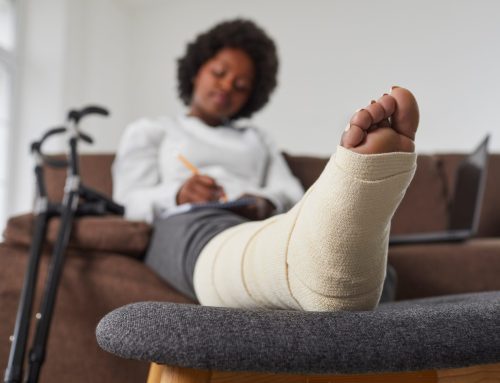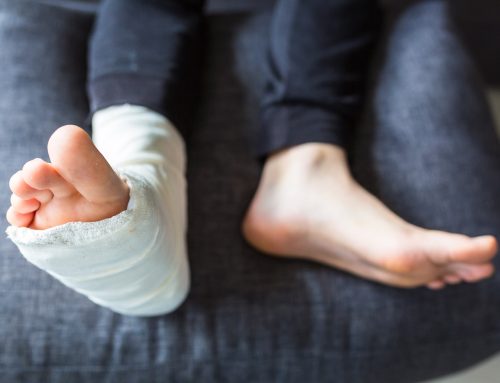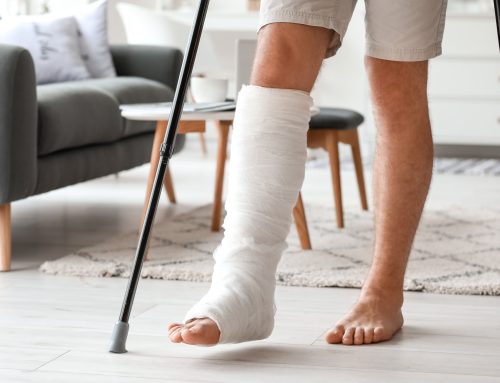Every year, countless individuals face the unexpected and daunting challenge of bone fractures. Often, these fractures are not the result of traumatic incidents but rather a silent medical condition known as osteoporosis. Termed the “silent disease,” osteoporosis quietly weakens bones, making them fragile and more prone to breaks.

What is Osteoporosis?
Osteoporosis is a term many have heard, but few truly understand. It's more than just a medical term or a potential risk as we age; it's a condition that can drastically affect one's quality of life. Let's delve deeper into osteoporosis, how it affects bone density, and who is most susceptible.
Understanding Bone Density: At its core, osteoporosis is a bone disease characterized by decreased bone density. Our bones are living tissues that constantly undergo a process of breakdown and renewal. Osteoporosis ensues when the creation of new bone doesn't keep up with the removal of old bone.
Who is at Risk?: While osteoporosis can affect anyone, post-menopausal women, older adults, and individuals with a family history are more susceptible. Certain medications, lifestyle factors, and medical conditions can also increase the risk.
The Osteoporosis-Fracture Link
The connection between osteoporosis and fractures isn't merely coincidental. These two are interlinked in ways that can be detrimental to those affected. Recognizing the relationship between fragile bones and their increased susceptibility to breaks is essential. Let's examine this connection's intricacies to equip ourselves better to prevent and manage potential risks.
The Vulnerability of Fragile Bones: With reduced bone density, even minor falls or stresses like bending over can cause fractures. The most common fracture sites include the hip, wrist, and spine.
Compounding Concerns: Apart from a fracture's immediate pain and discomfort, osteoporotic fractures can lead to long-term complications. A hip fracture, for instance, can significantly reduce mobility and may necessitate prolonged physical therapy.
Combating Osteoporosis: Prevention and Management
Tackling osteoporosis requires a multifaceted approach. It's not just about addressing the symptoms but also about implementing proactive measures to reduce its onset or progression. Armed with the right knowledge and strategies, it's possible to manage and even prevent this condition's debilitating effects. Here are some pivotal steps and considerations to keep in mind.
Diet and Nutrition
Diet plays a central role in osteoporosis prevention. Our bones are continuously undergoing a process of breakdown and renewal. To facilitate this, the body requires certain essential nutrients. Calcium is the primary mineral that bones use to remain strong and healthy. When the body lacks calcium, it extracts it from the bones, weakening them. Foods such as dairy products, leafy greens, and fortified foods are rich sources of calcium.
Vitamin D, often referred to as the "sunshine vitamin," plays a critical role in calcium absorption in the gut. Even a calcium-rich diet may only be fully effective with sufficient vitamin D. Natural sunlight exposure allows our skin to produce vitamin D, but it can also be found in fatty fish, fortified dairy products, and dietary supplements.
Regular Exercise
An active lifestyle is crucial for maintaining healthy bones. Weight-bearing exercises, which force the body to work against gravity, are particularly beneficial. These include activities like walking, jogging, dancing, and weight lifting. Such exercises stimulate bone-forming cells and help in increasing bone density. Furthermore, they improve muscle strength, coordination, and balance, which can reduce the risk of falls, a common cause of fractures in people with osteoporosis.
In addition to weight-bearing exercises, strength training is vital. It targets specific muscles and bones, fortifying them against the strain of daily activities and potential injuries.
Medical Screenings
Just as regular check-ups are essential to detect potential health issues, bone density tests are crucial for those at risk of osteoporosis. These screenings, often known as DEXA scans, measure the proportion of minerals in bone and provide insights into its strength. By evaluating bone density, these tests can determine the risk of fractures, even before they occur. Regular screenings enable individuals and their healthcare providers to monitor bone health over time and decide on preventive or treatment strategies early on, potentially thwarting the progression of osteoporosis.
Beyond Prevention: Healing Bone Fractures Efficiently
Unfortunately, even with preventive measures, fractures can still occur. When they do, ensuring an efficient healing process is paramount.
Typical treatments for osteoporotic fractures include pain management, immobilization, and sometimes surgery. Physical therapy is also recommended for restoring strength and mobility.
The Future of Fracture Healing - Melmak LIPUS Device:
Here's where science meets healing. The Melmak LIPUS device is a shining beacon in the realm of fracture treatment. Low-Intensity Pulsed Ultrasound (LIPUS), a non-invasive technology, transmits a painless mechanical force through the tissue, stimulating bone healing. This unique process enhances cell reproduction, protein expression, and cellular behaviour at the fracture site.
In just a 20-minute daily treatment, the Melmak LIPUS device has been shown to accelerate the healing of various fractures. The ease of use is another huge advantage: position it over the fracture site and press a button. That's it!
Having provided proven results for over two decades, this device, by Marodyne LiV, boasts of a safe, scientifically established technology with zero known side effects. Not only does it champion fracture healing, but it also naturally betters muscle strength, function, and circulation.
Understanding osteoporosis and its close relationship with fractures is vital. While prevention is always better than cure, knowing that innovative solutions like the Melmak LIPUS device exist brings hope and reassurance. For those navigating the journey of osteoporosis, remember that you're not alone, and there are cutting-edge tools ready to assist in your healing journey. Contact Fracture Healing to learn about the low-intensity pulsed ultrasound device.
What exercises do you implement that strengthen your bones? Do you have any concerns about your bone density? Share your thoughts with our readers in the comments below.





